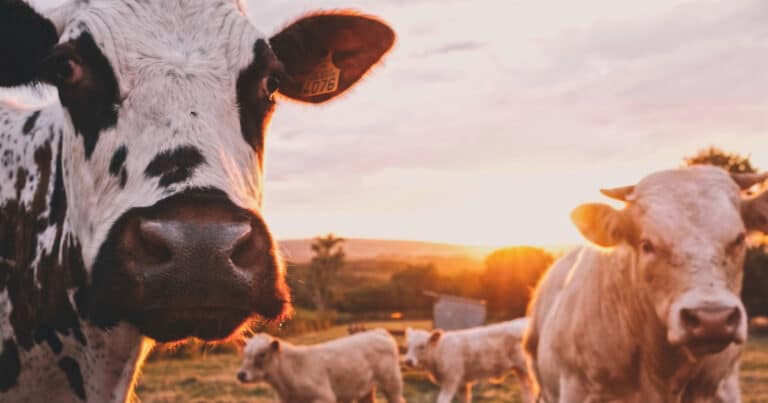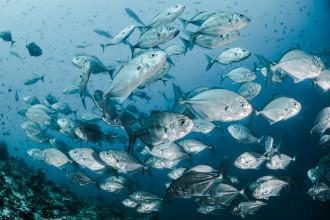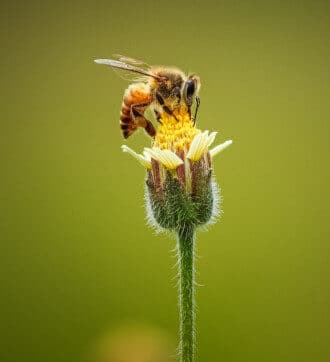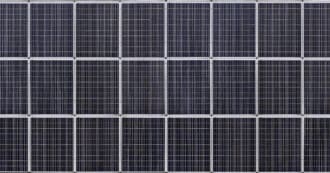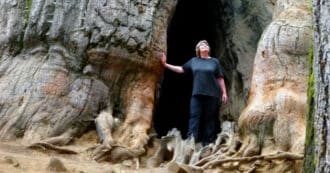By Aryeh Ronay – In this chapter of the Bible (Leviticus 11), Moses and Aaron are given a variety of rules to tell the Israelites what makes different animals kosher or not kosher, i.e. good to eat or not good to eat for the Israelite people. A kosher animal needs to “chew the cud” and have “split hooves.”
In addition, there is a long list of animals like the eagle, the vulture, flying insects, the gecko, the monitor lizard, the hoopoe and the bat to name a few, whose carcass “shall be unclean and shall not be eaten.”
Moreover, “whoever touches the carcass of any of them shall be unclean until the evening, and whoever carries any part of the carcass of any of them shall wash his clothes and be unclean until the evening” (Leviticus 11:24-45).
Let’s take a deeper look at these rules as they’re discussed in the book, Eco Bible, to understand how we can make a healthier, holier world.
Eco Bible
Feeding Cars, Cattle, and People by Rabbi David Seidenberg
Leviticus 11:3 – Any animal that has true hoofs, with clefts through the hoofs, and that chews the cud—such you may eat.
Any animal that chews its cud, such as a cow, can eat grasses and plants that humans cannot digest. Any animal that has split hooves, such as sheep, can walk and graze on land too rocky for people to farm with a plow. Thus, the only land animals that we can eat, according to the Torah, are animals that do not compete with humans for food. Embedded in this wisdom is another truth: any culture that lets domesticated herds compete with humans for food also pits farmers against herders—and pits the poor who have no land against owners who control both land and herds. Rising world food prices now endanger the poor in many countries. Prices are driven up in part by massive industrial feeding of grain to cattle raised for beef—instead of giving them their natural diet of diverse grasses and other pasture plants. The cost is driven up further by the ethanol fuel industry’s competition for the grain, competition between feeding our cars or cattle, or people.
Finding Justice for The Poor
To attain justice, possibly the most important value within Judaism’s culture, we need farming and animal husbandry to produce enough food for all people, poor and rich. We need to find alternatives to fuels from crops as well as fossil fuels.
Fishing Sustainably by Candace Nachman
Leviticus 11:9 – These you may eat of all that live in water: anything in water, whether in the seas or in the streams, that has fins and scales—these you may eat.
The Torah explains that all creatures in the waters, in the seas and in the rivers with both fins and scales, are acceptable (kosher) (Leviticus 11:9-12). However, those creatures that do not have fins and scales and that swarm in the waters are an abomination, and we should not eat their flesh. Yet if a fish loses its scales upon removal from the water, it is permissible for eating (Shulchan Arukh, Yoreh Deah 83:3).
The first time God speaks to any of the living creatures, the speech is directed at the fish. The Torah relates, “God blessed them saying: ‘Be fruitful and multiply, and fill the waters in the seas.'” The Torah uses fish to connote fertility and abundance. Perhaps this is because many species are capable of giving birth to many young at one time. When Jacob blesses his grandsons Ephraim and Menasseh, he says to them, “Let them grow into a multitude in the midst of the earth.” In this verse, the Hebrew word v’yidgu means grow derived from the root dag, which means fish.
Global Over Fishing
In today’s world, however, global overfishing is making fish less a symbol of fertility and abundance. The UN Food and Agriculture Organization estimates that since 1990, the percentage of fish stocks within biologically sustainable levels has declined dramatically, from 90 percent to 66 percent. It notes that “…in 2018, total global capture fisheries production reached the highest level ever recorded at 96.4 million tonnes—an increase of 5.4 percent from the average of the previous three years. World aquaculture production attained another all-time record high of 114.5 million tonnes in live weight in 2018.” These totals warn that many of the world’s marine fish stocks are currently being fished at their maximum or have already been overfished beyond their maximum and are now in decline.
Looking at the top ten wild-caught fish stocks, which account for 30 percent of the world capture fisheries production quantity, most are fully exploited or overexploited and cannot produce major increases in catch. For example, in the United States, Atlantic cod off Georges Bank (between Cape Cod and Nova Scotia) and the Gulf of Maine and yellowfin tuna in the Eastern Pacific were categorized as overfished in 2019.
Is Aquaculture A Solution?
Aquaculture has been touted by some as a solution to the crisis of world fisheries decline. Aquaculture is the “breeding, rearing, and harvesting of fish, shellfish, algae, and other organisms in all types of water environments.” According to the FAO, aquaculture now provides nearly 50 percent of the world’s fish for consumption. In 2019, carp, salmon, and tilapia were among the top ten species groups in aquaculture production. While some think aquaculture can solve the problem of overfishing and exploitation, there can be negative effects to the environment when aquaculture is not properly regulated.
Shrimp-farming operators have cut down thousands of acres of mangrove forests in Southeast Asia. Yet mangroves are vital habitat for hundreds of marine species—including newborns of many species—as well as storm protection for upland areas. The world’s largest mangrove forest, the Sunderbans in India and Bangladesh, was hit directly by Cylone Amphon in May 2020, one of the largest storms in decades. “The tidal surge submerged part of the forest,” said Belayet Hossain, a Bangladeshi forest official. The mangroves softened the impact of Cyclone Amphon on tens of millions of people.
The best choice, other than eliminating or reducing the amount of fish we eat, is to eat fish from sustainable fisheries. There are many fish that are harvested in sustainable ways. The Marine Conservation Society provides a “Good Fish Guide” which lists 139 fish and seafood on a scale of most sustainable (Green rated) to least sustainable (Red rated).
Our dominion over creatures in the waters does not also give us the right to cause their extinction. The world and all its inhabitants belong to God. Unsustainable fishing practices in many parts of the world have led to the current troubled state of the world’s fisheries. Our actions are working against the blessing that God gave fish species to be fruitful.
The opportunities before us are to buy fish sustainably, and work to promote environmental practices and policies that will not harm fish species or the waters where they should thrive. In these ways, we can fulfill the divine mandate for human stewardship of God’s planet, not just to use it but to protect it.
No Bees, No Honey (Or Many Other Foods)
Leviticus 11:23 – But all other winged swarming things that have four legs shall be an abomination for you.
Despite the Biblical prohibition against eating most insects, they have long been a significant source of food in most parts of the world, including Central and South America, Africa, Asia, and Australia. The UN Food and Agriculture Organization suggests insects as a potential protein resource for feeding the world’s population, as other resources like fish decline. Meanwhile many insect species are also in dangerous decline or threatened, due to habitat loss, pesticide use, disease, and climate change. The Biblical prohibition against eating most insects likely had the effect of protecting insects in ancient Israel.
Bees are a striking example of insects critical to human life, put at risk by human activity. Bees pollinate 70 of the 100 species of crops that provide 90 percent of food worldwide, but bee populations are being devastated. Nine percent of European wild bee species could go extinct, and five percent could be threatened in the near future. Some governments are moving slowly to try to save bee populations, by legislating against pesticides that end up harming beneficial insects.
In Israel, the bee population is holding steady thanks to 80,000 to 100,000 seedlings—especially eucalyptus trees—planted every year to give bees a varied, abundant diet across the seasons. The Jewish National Fund (KKL-JNF) nurseries provide these seedlings for free, and they are planted on beekeepers’ land. “As open areas are decreasing in the last decade, we find ourselves with less land for afforestation. [But with this strategy of planting saplings on beekeepers’ lands] everybody benefits: We have trees, the bees have flowers, and the keepers have honey,” explains Aviv Eizenband, head of forestry and professional development at KKL-JNF’s Forest Service.
Israel is known as the “land of milk and honey.” The Midrash says, “The purposes of the Blessed Holy One are carried out in all places, and God has not created a single thing in vain. Sometimes God’s purpose is achieved by means of a frog, sometimes by means of a hornet, sometimes by means of a scorpion.… This is indeed the way of the Blessed Holy One—to achieve a purpose by means of small things!” (Midrash Numbers Rabbah 18.22)
* Featured image source

